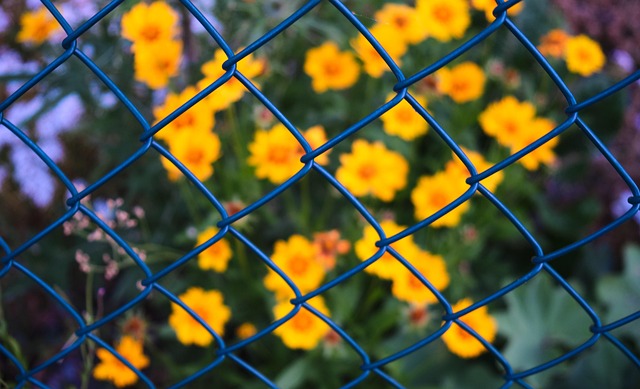For New Bedford, Massachusetts homeowners considering a DIY fence installation, this comprehensive guide offers essential insights. Before breaking ground, understanding local regulations is paramount to avoid fines. Select a fence type and style that aligns with your property’s aesthetics and needs—wooden privacy fences are popular for their classic charm. Planning involves meticulous measuring and layout design. Ground preparation includes leveling and marking the perimeter. This article will walk you through assembly, securing, and finishing tips, ensuring a durable, attractive new fence.
- Understanding New Bedford's Fencing Regulations
- Choosing the Right Fence Type and Style
- Measuring and Planning Your Fence Layout
- Preparing the Ground for Installation
- Step-by-Step Guide to DIY Fence Assembly
- Tips for Securing and Finishing Your New Fence
Understanding New Bedford's Fencing Regulations
Before installing a fence in New Bedford, it’s crucial to understand local regulations to ensure your project complies with building codes and neighborhood association rules. New Bedford has specific guidelines regarding fence height, materials, and placement. For instance, fences in residential areas are typically limited to certain heights, usually not exceeding 6 feet. Additionally, the location of the fence might be subject to restrictions, especially near public roads or neighbors’ properties. Homeowners should check with the local building department for precise regulations and obtain any necessary permits before beginning installation.
Understanding these regulations is vital to avoid costly fines and potential disputes with neighbors. Permits ensure your project meets safety standards and allows you to construct a fence that enhances your property while aligning with community rules. Take the time to research and understand New Bedford’s fencing regulations, ensuring a smooth DIY installation process.
Choosing the Right Fence Type and Style
When it comes to enhancing your New Bedford, Massachusetts property, selecting the perfect fence is a significant decision. The right fence not only complements your home’s aesthetic but also serves various functional purposes, from privacy and security to defining property lines. Start by evaluating your specific needs and preferences. Do you seek a robust, long-lasting barrier for safety and privacy? Or perhaps an elegant, visually appealing addition that increases curb appeal?
Consider factors like material (wood, vinyl, or metal), fence height, and style (from traditional picket fences to modern geometric designs). Local regulations regarding fence installation should also guide your choice. Ensure the design aligns with neighborhood guidelines while reflecting your unique taste, ultimately creating a welcoming and secure outdoor space.
Measuring and Planning Your Fence Layout
Before breaking ground, meticulous planning is key when installing a DIY fence. Start by visualizing your desired layout – consider factors like the fence’s purpose (privacy, security, aesthetic), property lines, and surrounding landscapes. Measure the perimeter of your yard to determine the total length of fencing needed. Create a sketch or use mapping apps to mark potential fence locations, ensuring compliance with local regulations.
Identify any obstacles in your path – trees, utility lines, or existing structures – and plan how to navigate them. This step will help you choose the right tools and materials for the job, ensuring a smooth installation process. Accurate measurements and thoughtful planning are fundamental to achieving a professional-looking fence that enhances your New Bedford, Massachusetts property.
Preparing the Ground for Installation
Before installing your fence, preparing the ground is a crucial step. Clear any debris, such as branches or weeds, from the area where the fence will be erected. Digging and leveling the ground ensure a solid foundation for your fence. Use a level to check that the surface is even, especially if you’re installing a wooden fence, as an uneven base can lead to warping over time.
Remove any rocks, stones, or roots that could disrupt the fence’s alignment. If necessary, compact the soil to create a stable base for the posts. This process involves using a plate compactor to pack down the earth, resulting in a sturdy surface that will support your fence throughout all seasons.
Step-by-Step Guide to DIY Fence Assembly
Start by measuring and marking the fence line, ensuring it aligns with your property boundaries. Dig holes for the posts using a post-hole digger, following local building codes for depth and spacing. Place wooden posts in the holes, checking for level, and fill the holes with concrete to secure them firmly. Allow the concrete to set completely. Attach the horizontal rails to the posts using brackets or nails, ensuring they are even and secure. Measure and cut fence panels to fit between the rails. Install the panels by attaching them to both the rails and the ground using suitable fasteners. Double-check all connections for stability before trimming any excess material.
Tips for Securing and Finishing Your New Fence
Once your fence posts are securely in place, it’s time to start attaching the fence panels. Begin by measuring and marking the location of each post to ensure consistent spacing. Next, use high-quality hardware like brackets or nails designed for outdoor use to secure the panels to the posts. Make sure all connections are tight and sturdy.
For a finished look, trim any excess material from the panels and apply a coat of exterior paint or sealant. This not only enhances the aesthetic appeal but also protects your fence from the elements. Regular maintenance, such as cleaning and re-painting, will ensure your new fence remains in top condition for years to come.
